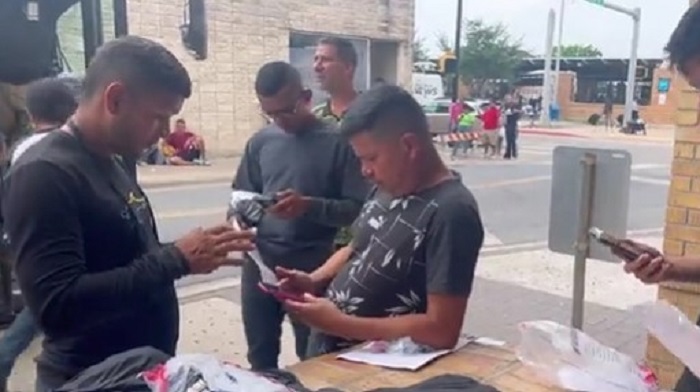Hotta found, to his surprise, that a simple sequence of events could, in fact, induce the quantum vacuum to go negative—giving up energy it didn’t appear to have. “First I thought I was wrong,” he said, “so I calculated again, and I checked my logic. But I could not find any flaw.”
The trouble arises from the bizarre nature of the quantum vacuum, which is a peculiar type of nothing that comes dangerously close to resembling a something. The uncertainty principle forbids any quantum system from settling down into a perfectly quiet state of exactly zero energy. As a result, even the vacuum must always crackle with fluctuations in the quantum fields that fill it. These never-ending fluctuations imbue every field with some minimum amount of energy, known as the zero-point energy. Physicists say that a system with this minimal energy is in the ground state. A system in its ground state is a bit like a car parked on the streets of Denver. Even though it’s well above sea level, it can’t go any lower.
Illustration: Quanta Magazine
And yet, Hotta seemed to have found an underground garage. To unlock the gate, he realized, he had only to exploit an intrinsic entanglement in the crackling of the quantum field.
The incessant vacuum fluctuations cannot be used to power a perpetual motion machine, say, because the fluctuations at a given location are completely random. If you imagine hooking up a fanciful quantum battery to the vacuum, half the fluctuations would charge the device while the other half would drain it.
But quantum fields are entangled—the fluctuations in one spot tend to match fluctuations in another spot. In 2008, Hotta published a paper outlining how two physicists, Alice and Bob, might exploit these correlations to pull energy out of the ground state surrounding Bob. The scheme goes something like this:
Bob finds himself in need of energy—he wants to charge that fanciful quantum battery—but all he has access to is empty space. Fortunately, his friend Alice has a fully equipped physics lab in a far-off location. Alice measures the field in her lab, injecting energy into it there and learning about its fluctuations. This experiment bumps the overall field out of the ground state, but as far as Bob can tell, his vacuum remains in the minimum-energy state, randomly fluctuating.
But then Alice texts Bob her findings about the vacuum around her location, essentially telling Bob when to plug in his battery. After Bob reads her message, he can use the newfound knowledge to prepare an experiment that extracts energy from the vacuum—up to the amount injected by Alice.
“That information allows Bob, if you want, to time the fluctuations,” said Eduardo Martín-Martínez, a theoretical physicist at the University of Waterloo and the Perimeter Institute who worked on one of the new experiments. (He added that the notion of timing is more metaphorical than literal, due to the abstract nature of quantum fields.)
Bob can’t extract more energy than Alice put in, so energy is conserved. And he lacks the necessary knowledge to extract the energy until Alice’s text arrives, so no effect travels faster than light. The protocol doesn’t violate any sacred physical principles.

























































